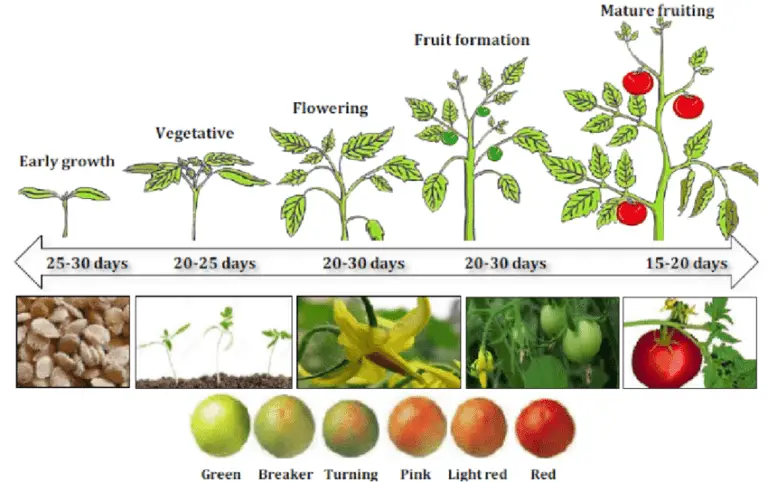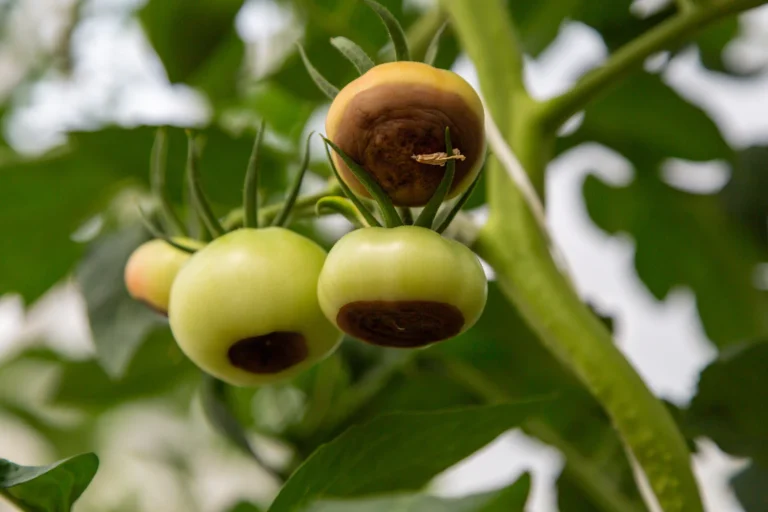Orchids 101: A Guide to 47 Different Types with Names and Photos
Did you know that there are over 25,000 species of orchids worldwide, making them one of the largest and most diverse plant families on Earth? In our comprehensive guide, “Orchids 101: A Guide to 47 Different Types with Names and Photos,” we delve into the fascinating world of orchids, showcasing a stunning array of varieties that can grace your home or garden.
Whether you’re a seasoned orchid enthusiast or a curious beginner, this guide provides everything you need to know about identifying, growing, and caring for these exquisite plants. Dive into our detailed profiles, complete with vibrant photos, and discover the beauty and diversity of orchids. Start exploring now and elevate your gardening game with these captivating blooms.
Table of Contents
Introduction to the World of Orchids
Orchids are a captivating and diverse group of flowering plants that have enchanted gardeners and botanists for centuries.

- Diverse Species and Hybrids: With over 25,000 known species and countless hybrids, orchids come in an astonishing array of shapes, colors, and sizes.
- Global Presence: These fascinating plants are found in nearly every corner of the globe, from tropical rainforests to arid deserts, making them a favorite among gardening enthusiasts worldwide.
- Orchid Appeal: The sheer beauty and complexity of orchids have earned them a special place in the hearts of many.
- Extraordinary Blooms: Orchid blooms range from vibrant and bold to delicate and intricate, with each species exhibiting its own unique charm.
- Popular Varieties:
- Cattleya Orchids: Known for their large, fragrant flowers.
- Phalaenopsis Orchids: Famous for their graceful, cascading blooms.
- Adaptability: Despite a reputation for being fragile and high-maintenance, many orchid varieties are surprisingly adaptable and can thrive in a range of environments.
I recently used “Orchids 101: A Complete Guide to Growing Beautiful Orchids,” and it has been a game-changer for my orchid collection. The book is incredibly detailed, covering everything from basic care to advanced techniques, making it perfect for both beginners and experienced growers. The step-by-step instructions and vibrant photos made it easy to follow along, and I’ve already seen a noticeable improvement in my orchids’ health and blooming. Highly recommend it for anyone looking to enhance their orchid-growing skills!
- Comprehensive Guide: Covers all aspects of orchid care, from choosing the right orchids to advanced growing techniques.
- User-Friendly: Easy to understand, even for beginners with no prior experience in orchid cultivation.
- Beautiful Illustrations: High-quality photos and diagrams that visually aid the instructions.
- Expert Tips: Includes insights and tips from experienced orchid growers.
- Problem-Solving Section: Offers solutions to common issues such as pests, diseases, and environmental challenges.
- Specific Focus: Primarily focuses on common orchid varieties, which might not be helpful for those interested in rare or exotic types.
- Physical Copy Only: Not available in digital format, which could be a drawback for those who prefer e-books.
- Advanced Techniques: While it includes advanced techniques, beginners might find these sections a bit overwhelming initially.
- Limited Geographic Relevance: Some care advice may be more relevant to specific climates, limiting its applicability for growers in different regions.
Understanding the Diversity of Orchids
Understanding the diversity of orchids is essential for any gardener or enthusiast who wishes to delve into the world of these captivating plants. With over 25,000 documented species and countless hybrids, orchids showcase an incredible range of shapes, colors, and patterns, making them one of the most diverse plant families on Earth.

- Flower Diversity:
- Orchids exhibit an astonishing variety of flower structures. From the slipper-shaped pouch of Paphiopedilum species to the intricate flowers of Oncidium, each orchid species has unique attributes.
- These diverse flower forms play a crucial role in specialized pollination strategies.
- Growth Habits and Habitats:
- Orchids occupy various ecological niches:
- Epiphytes: Over 70% of orchids are epiphytes, growing on trees or rocks. They absorb nutrients from their surroundings and don’t harm their host trees.
- Terrestrial Orchids: About 30% grow in soil on the forest floor.
- Lithophytes: Some orchids prefer rocky surfaces.
- Aquatic Orchids: A few species have adapted to an aquatic lifestyle.
- This diversity allows enthusiasts to explore different cultivation methods.
- Orchids occupy various ecological niches:
- Origins and Evolution:
- Orchids have adapted over millions of years.
- The first orchid pollinia (pollen capsules) were found petrified in amber dating back 15-20 million years.
- Orchids diversified into almost 800 genera and 28,000 cataloged species.
- Conservation and Exploration:
- Understanding orchid diversity helps us appreciate their beauty and ecological importance.
- Explore popular varieties suitable for beginners and discover rare and exotic orchids.
Whether you’re an orchid aficionado or a curious gardener, the world of orchids offers endless wonder!
Exploring the Origins and History of Orchids
Orchids, with their delicate and intricate flowers, have a captivating beauty that has enchanted humans for centuries. Exploring the origins and history of these fascinating plants is like unravelling a captivating story that spans thousands of years. Orchids belong to the family Orchidaceae, which is one of the largest families of flowering plants in the world. With an estimated 25,000 to 30,000 species, they display an incredible diversity in size, shape, color, and fragrance.
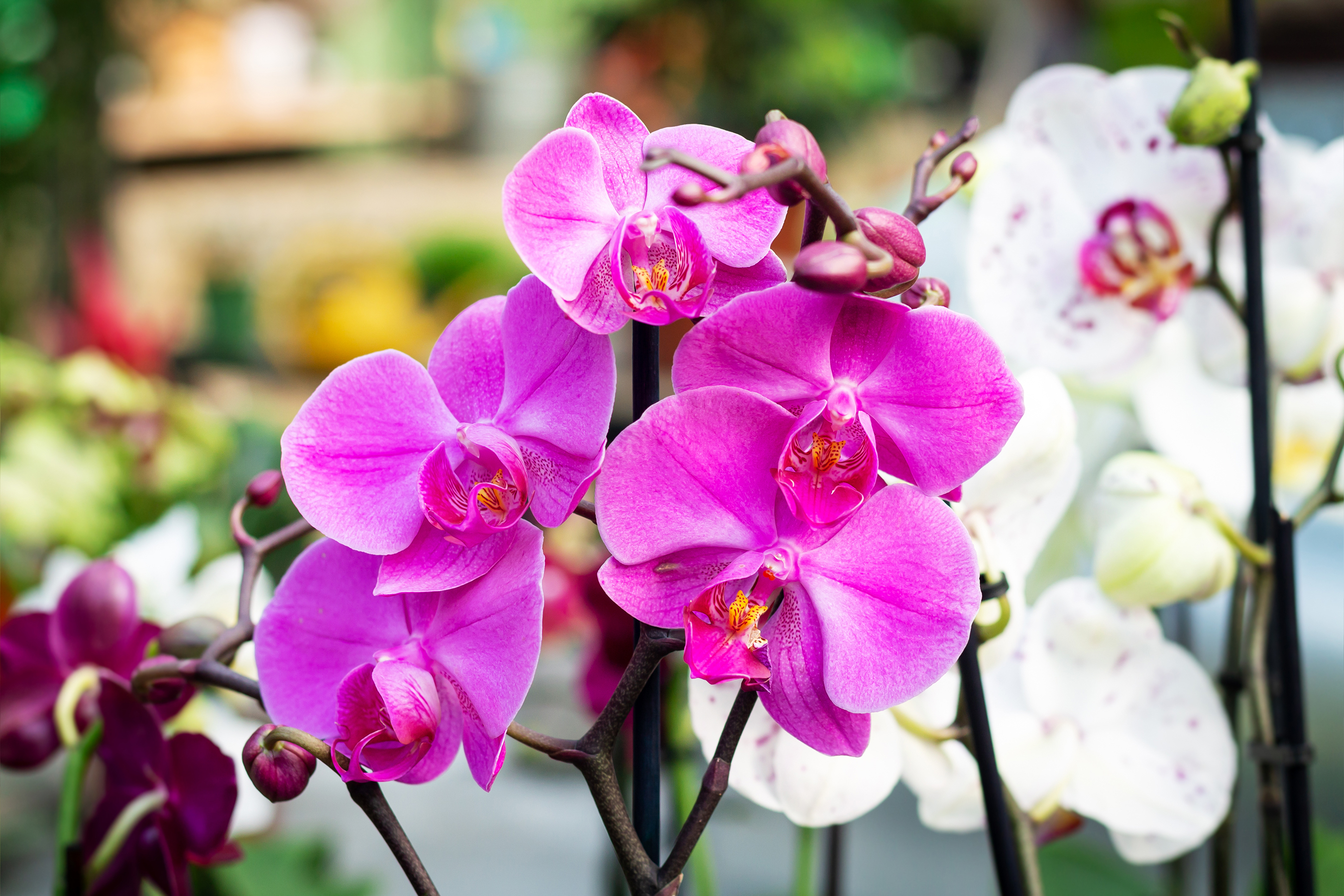
- Ancient Origins:
- Orchids first appeared nearly 200 million years ago.
- Fossil evidence dates orchids to the Jurassic, Mesozoic, and Cenozoic eras.
- They spread from the equator to the Arctic Circle and from the Himalayas to Australia.
- Egyptian Connection:
- Ancient Egyptians prized orchids for their healing properties.
- Orchids were depicted in Egyptian artwork and buried alongside pharaohs as symbols of luxury and eternal life.
- Aztec and Mayan Reverence:
- Orchids held significance in Aztec and Mayan cultures.
- Associated with gods, they featured in religious ceremonies and were believed to possess mystical powers.
- Chinese and Japanese Influence:
- In China, orchids symbolize refinement, integrity, and nobility.
- Japanese culture admires orchids for their elegance and considers them a symbol of luxury and royalty.
- Age of Exploration Discoveries:
- During the Age of Exploration, explorers found previously unknown orchid species in exotic places like South America, Africa, and Southeast Asia.
The enduring allure of orchids continues to captivate hearts and imaginations across cultures and centuries! 🌸🌿
The Importance of Orchid Classification and Naming
Orchids are one of the most diverse and fascinating plant families, with thousands of species and even more hybrids. With such a vast array of orchid varieties out there, classification and naming become essential tools for both scientific study and practical purposes.

- Organization and Clarity: Orchid classification provides organization and clarity within the botanical world.
- Identification and Communication: Categorizing orchids into genera, species, and hybrids helps scientists and enthusiasts easily identify and communicate about specific orchids.
- Accurate Research: This classification system allows for accurate research, documentation, and discussion of each orchid’s characteristics, behavior, and growing requirements.
- Conservation Efforts: Classification plays a crucial role in preserving orchid species and preventing extinction by identifying rare and endangered orchids needing special attention and protection.
- Significance of Naming:
- Reflects Characteristics: Orchid names often reflect the plant’s color, shape, or scent.
- Honors Discoverers: Names can honor the person who discovered or bred the orchid.
- Adds Cultural Value: A well-chosen name adds cultural and historical value, creating a connection between the plant and its story.
- Standardization: Standardized names aid in international communication, ensuring the same orchid is recognized and understood worldwide, regardless of language.
Popular Orchid Varieties for Beginners
Orchids are beloved for their stunning flowers and exotic allure, making them a popular choice for beginner gardeners. With hundreds of orchid varieties to choose from, it can be overwhelming to determine where to start. Fortunately, there are several popular orchid varieties that are well-suited for beginners, offering beauty and ease of care.
| Orchid Variety | Advantages | Disadvantages | Characteristics |
|---|---|---|---|
| Phalaenopsis (Moth Orchids) | – Easy to care for | – Sensitive to overwatering | – Long-lasting, elegant blooms |
| Cattleya | – Resilient and adaptable | – Requires bright light | – Large, showy flowers with captivating fragrance |
| Oncidium (Dancing Lady Orchids) | – Bright and fun colors | – Frequent watering needed | – Clusters of smaller flowers |
| Cymbidium | – Wide range of colors | – Requires cooler temperatures | – Blooms can last up to three months |
| Lady’s Slipper Orchids | – Beautiful foliage even when not blooming | – Unique pouch-shaped petals | – Pink, white, or yellow blooms |
| Paphiopedilum (Lady of the Night Orchid) | – Exotic appearance | – Requires well-draining soil | – Slipper-shaped flowers |
| Dendrobium | – Diverse species | – Varying light tolerance | – Can bloom profusely |
| Vanda | – Vibrant colors | – Needs high humidity | – Air roots and large, flat flowers |
| Epidendrum | – Hardy and adaptable | – Tolerates different light conditions | – Tall, colorful spikes |
| Zygopetalum | – Fragrant blooms | – Requires cooler temperatures | – Unique patterns on petals |
When beginning your orchid journey, it’s important to choose varieties that match your level of experience and the growing conditions you can provide. These popular orchid varieties – the Phalaenopsis and Cattleya orchids – are excellent choices for beginners, offering both beauty and a relatively simple care routine. As you gain confidence in your skills, you can explore more diverse and challenging orchid species. So, why not start your orchid adventure today and witness the beauty of these remarkable plants firsthand?
Rare and Exotic Orchids: A Closer Look
Rare and exotic orchids are a captivating and alluring group of plants that fascinate gardeners and flower enthusiasts alike. These extraordinary specimens represent an awe-inspiring array of colors, shapes, and sizes, making them a coveted addition to any collection.
:max_bytes(150000):strip_icc()/__opt__aboutcom__coeus__resources__content_migration__mnn__images__2019__07__ghost-orchid-fakahatchee-florida-04-d0ca1a04025645a58d38ae07dd0200dc.jpg)
- Paphiopedilum rothschildianum:
- Also known as Rothschild’s slipper orchid.
- Highly sought after for its striking blossoms with bold maroon stripes on a pale yellow background.
- Ghost Orchid (Dendrophylax lindenii):
- Known for its elusive nature and ethereal beauty.
- Features delicate white petals and an intriguing growth habit.
- Captivates botanists and nature enthusiasts for centuries.
- Aesthetic Appeal:
- These rare orchids are renowned for their unique and stunning appearances.
- Unique Cultivation Requirements:
- Thrive in specific habitats that mimic their natural environments, such as cloud forests or tropical rainforests.
- Require conditions like elevated humidity levels and consistent temperatures, challenging for gardeners to provide.
- Specialized Pollination Needs:
- Some rare orchids rely on specific insects or even bats for pollination.
- These specialized needs demand extra care and attention from growers.
- Rewarding Effort:
- Despite the challenges, the effort to cultivate these rare orchids is rewarded with their exquisite beauty and remarkable adaptability.
- Captivating Wonders:
- Rare and exotic orchids offer a captivating glimpse into the wonders of the plant world.
Orchids for Indoor Cultivation: Tips and Tricks
Indoor cultivation of orchids is a popular choice for gardening enthusiasts who want to enjoy these captivating plants year-round. With the right tips and tricks, you can create a favorable environment that mimics the natural conditions orchids require for healthy growth and blooming.
:max_bytes(150000):strip_icc()/phalaenopsis-orchids-definition-1902866-01-6f299423133b471ca15a94ac2561d688.jpg)
Orchids need bright but indirect light to thrive.
Place them near a south or east-facing window where they receive filtered sunlight.
If natural light is limited, use artificial grow lights designed for orchids.
Position grow lights 12 to 18 inches above the plants and leave them on for 12 to 14 hours a day.
Monitor light exposure to avoid sunburn or insufficient lighting.
Most orchids require high humidity (50% to 70%).
Increase humidity using a humidifier or a water-filled tray near the orchids.
Grouping several orchids together creates a microclimate of higher humidity.
Avoid misting leaves directly to prevent fungal diseases.
Use a hygrometer to monitor humidity levels.
By incorporating these tips and tricks into your indoor orchid cultivation routine, you can foster a favorable environment that promotes their growth and blooms. Remember that each orchid species has its own specific requirements, so it’s essential to research and understand the particular needs of the orchids you choose to cultivate indoors. With proper care and attention, your indoor orchids will reward your efforts with stunning displays of beauty.
I’ve been using the ThermoPro TP50 Digital Hygrometer Thermometer for a few weeks now, and it has been fantastic. It provides accurate readings for both temperature and humidity, helping me maintain the ideal environment for my indoor plants. The display is clear and easy to read, and it updates quickly to reflect any changes. This device has been incredibly useful for ensuring my home stays comfortable and my plants thrive. Highly recommended!
✅ Compact Design: Small, lightweight, and easy to place anywhere.
✅ Easy to Read: Large, clear display with high readability.
✅ Versatile Use: Suitable for indoor use, ideal for home, greenhouse, or office.
✅ Affordable: Cost-effective solution for monitoring climate conditions.
❌ Battery Life: Frequent battery replacements may be necessary.
❌ Build Quality: Some users report that the build feels a bit flimsy.
❌ Refresh Rate: May have a slower refresh rate compared to more expensive models.
❌ No Backlight: Difficult to read in low-light conditions.
Outdoor Orchid Growing: Climate and Care Considerations
Outdoor orchid growing requires careful consideration of climate and specific care requirements to ensure the health and vigor of these delicate plants. Orchids are known for their beauty and unique growing habits, but they can be quite sensitive to their environment.
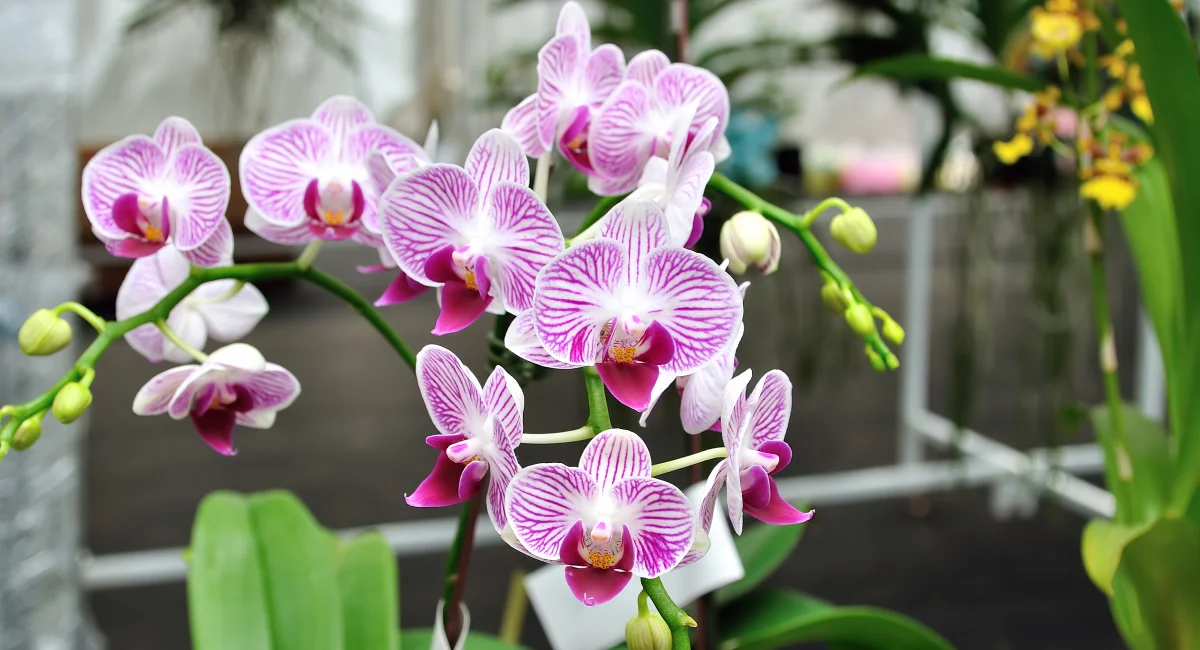
- Climate Considerations:
- Different orchid species have varying temperature and humidity preferences.
- Choose orchids suited to the local climate.
- Tropical orchids: Thrive in warmer temperatures and higher humidity.
- Temperate orchids: Prefer cooler temperatures and lower humidity levels.
- Research specific temperature and humidity requirements for your chosen orchid varieties and ensure they align with your region’s climate.
- Proper Care:
- Potting Media:
- Select a well-draining potting mix that allows air to reach the roots.
- Watering:
- The frequency varies based on orchid type, potting media, and weather conditions.
- Monitor moisture levels of the potting mix and adjust watering accordingly to avoid under or overwatering.
- Fertilization:
- Essential for providing necessary nutrients for growth and blooming.
- Use a balanced orchid fertilizer at a dilution recommended by the manufacturer.
- Potting Media:
- Overall Success:
- Providing the ideal growing conditions and attentive care is crucial.
- This contributes to the overall success of outdoor orchid cultivation.
Essential Tools and Supplies for Orchid Enthusiasts
When it comes to nurturing and caring for orchids, having the right tools and supplies is essential for success. As an orchid enthusiast, investing in quality equipment will not only make your gardening experience more enjoyable but also ensure the health and longevity of your delicate blooms.
- Pruning Shears:
- Essential for precision trimming of dead or overgrown leaves.
- Promotes healthy growth and prevents the spread of diseases.
- Choose shears with sharp blades and a comfortable grip for effortless and efficient pruning.
- Watering System:
- Crucial for maintaining proper moisture levels.
- Spray Bottle:
- Ideal for gentle misting without over-saturating the plants.
- Watering Can:
- Suitable for larger collections.
- A long spout helps reach plants in tight spaces and provides a controlled, even flow of water.
- Consistency in watering is key; find a method that works best for you and your plants.
- Proper Lighting:
- Natural Light: Ideal but not always accessible.
- Artificial Lighting:
- Full-spectrum LED grow lights mimic the sun’s rays.
- Provide the necessary light spectrum for optimal photosynthesis.
- Promote healthy growth and vibrant blooms.
Ensuring you have the right tools and systems in place is critical for the successful growth and care of your orchids.
Here are essential tools and supplies for orchid enthusiasts:
| Essential Tools and Supplies for Orchid Enthusiasts | Items |
|---|---|
| 1. Orchid Pots | – Use well-draining pots with ample ventilation. |
| 2. Orchid Potting Mix | – Choose a specialized orchid mix for aeration. |
| 3. Fertilizer for Orchids | – Use a balanced orchid fertilizer with essential nutrients. |
| 4. Watering Can with Narrow Spout | – Allows precise watering without over-soaking. |
| 5. Humidity Tray | – Helps maintain adequate humidity around orchids. |
| 6. Moisture Meter | – Measures soil moisture to prevent overwatering. |
| 7. Pruning Shears or Scissors | – Essential for trimming dead or damaged parts. |
These tools and supplies are fundamental for successful orchid care, providing the necessary elements for proper watering, potting, fertilizing, and maintaining a healthy growing environment.
Stay tuned for more essential tools and supplies for orchid enthusiasts in the next section, where we will delve into the world of potting mixes and fertilizers.
Orchid Reproduction: From Seeds to Blooms
Orchids, with their mesmerizing beauty and intricate forms, have captivated the hearts of plant enthusiasts for centuries. Understanding the reproductive process of these stunning flowers can unlock the key to successfully cultivating and propagating them. From seeds to blooms, the orchid reproduction journey is a fascinating one.
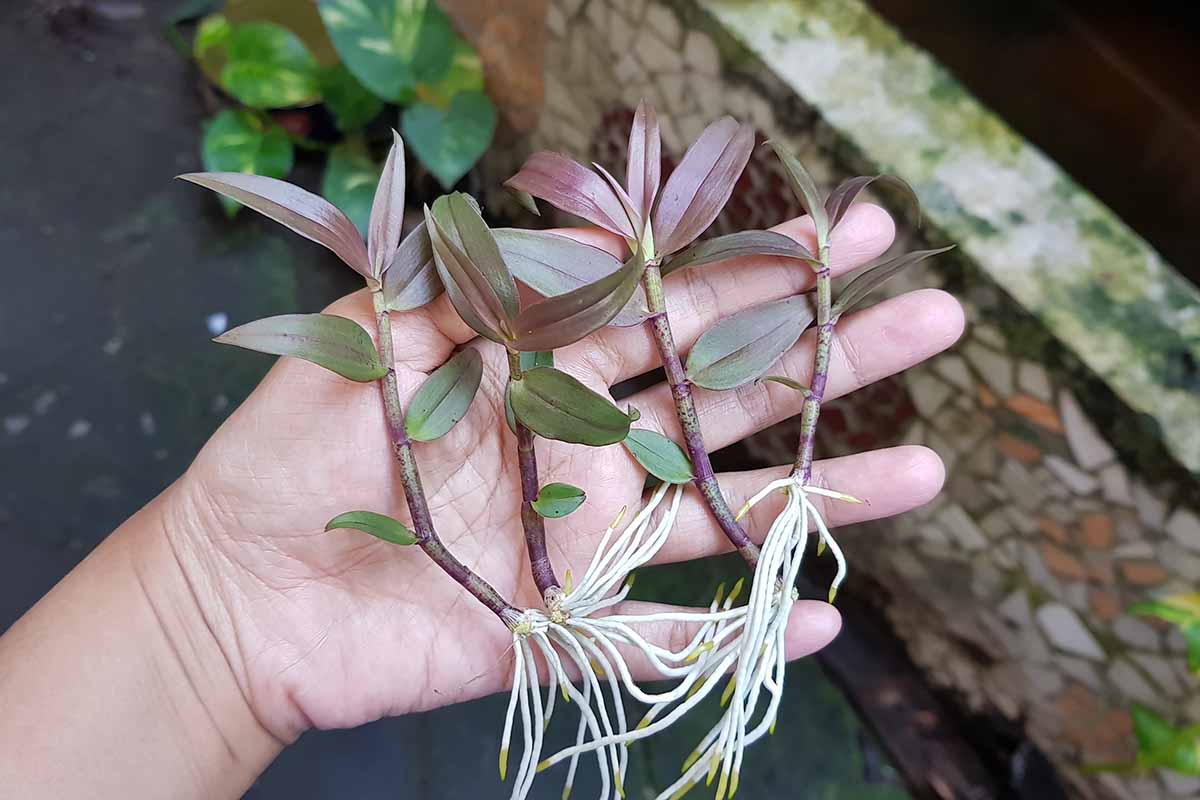
- Pollination Strategies:
- Orchids use a wide variety of complex, highly specialized methods to attract pollinators.
- Some orchids lure their pollinators with nectar rewards. As insects drink nectar, they inadvertently transfer pollen between flowers, leading to seed production.
- Other orchids employ deception. For instance, the bees orchid (Ophrys apifera) has a lip-shaped petal that resembles a female solitary bee. Male bees attempt to mate with the flower, transferring pollen in the process.
- Dracula orchids emit a scent like gilled fungi, attracting fruit flies and tricking them into pollinating the orchid.
- Seed Germination:
- Orchid seeds are tiny and lack energy reserves. They rely on a symbiotic relationship with fungi for germination.
- These fungi help orchid seeds obtain necessary.
- Specific environmental conditions (light, temperature, moisture) are crucial for successful seedling development.
- It takes months or even years for an orchid seedling to mature and produce its first blooming flower.
In summary, orchids’ intricate pollination methods and delicate seed development contribute to their remarkable beauty and diversity.
Common Orchid Pests and Diseases: Prevention and Treatment
Orchids are known for their exquisite beauty and delicate nature, but like any plant, they are susceptible to pests and diseases that can hinder their growth and vitality. It is important for orchid enthusiasts to be aware of the common pests and diseases that can affect their plants, and to take proactive measures to prevent and treat them.
| Pest/Disease | Symptoms | Treatment | Effects on Plant |
|---|---|---|---|
| Scale | – Small, immobile insects on leaves and stems- Sticky residue (honeydew) | – Remove scales manually- Apply insecticidal soap or neem oil | – Weakened plant growth- Yellowing leaves |
| Mealybugs | – White, cottony clusters on new growth- Honeydew secretion | – Remove mealybugs manually- Use insecticidal soap or alcohol | – Stunted growth- Leaf distortion |
| Mites | – Tiny, spider-like creatures- Webbing on leaves | – Spray with water to dislodge mites- Apply miticides if necessary | – Yellowing leaves- Reduced vigor |
| Thrips | – Silver streaks on leaves- Deformed flowers | – Use insecticidal soap or neem oil- Isolate affected plants | – Distorted flowers- Reduced flowering |
| Slugs and Snails | – Irregular holes in leaves- Slime trails | – Handpick slugs and snails- Use slug baits | – Damaged leaves- Slow growth |
| Fungus Gnats | – Small, dark flies around plants- Larvae in soil | – Allow soil to dry between waterings- Use yellow sticky traps | – Root damage- Poor growth |
| Aphids | – Pear-shaped insects on new growth- Sticky honeydew | – Spray with water to dislodge aphids- Use insecticidal soap | – Distorted leaves- Reduced flowering |
| Ants | – Ant trails on stems and leaves- Colonize roots | – Remove ant trails and nests- Use ant baits | – Disrupted root system- Nutrient loss |
| Whiteflies | – Tiny, white insects on undersides of leaves- Honeydew secretion | – Use yellow sticky traps- Apply insecticidal soap | – Yellowing leaves- Reduced photosynthesis |
| Roaches | – Rarely infest orchids- May damage roots | – Keep growing area clean and dry- Use roach traps | – Root damage- Stress on plant |
Meticulous care and attention is required to ensure that orchids remain healthy and vibrant. By being vigilant and taking necessary preventive measures, orchid enthusiasts can keep their plants free from pests and diseases, allowing them to thrive and showcase their magnificent blooms. In the next section, we will delve deeper into specific treatments for common orchid diseases and explore additional measures to promote the well-being of these exotic plants.
Orchid Conservation and the Threats They Face
Orchids, one of the most diverse and mesmerizing plant families on Earth, are facing numerous threats in their natural habitats. These threats have become a cause for concern among conservationists and orchid enthusiasts alike. The delicate balance of orchid ecosystems is being disrupted by human activities, climate change, and the illegal trade of rare and exotic orchids.
- Habitat Loss:
- Causes:
- Deforestation
- Urbanization
- Agriculture
- Consequences:
- Orchids lose their natural habitats
- Significant decline in orchid populations
- Causes:
- Climate Change:
- Impacts:
- Orchids are sensitive to temperature and rainfall changes
- Disrupts the balance between orchids and their pollinators
- Effects:
- Makes it challenging for orchids to reproduce and maintain healthy populations
- Rising global temperatures and extreme weather events harm orchid growth and survival
- Impacts:
- Illegal Trade:
- Issues:
- Orchids are highly sought after for their beauty and rarity
- Leads to illegal collection and trade
- Consequences:
- Depletes wild orchid populations
- Disrupts ecological relationships
- Fuels unsustainable practices and threatens the existence of orchids in the wild
- Issues:
- Conservation Actions:
- Habitat Preservation:
- Preserve and restore orchid habitats
- Implement sustainable land use practices
- Combat Illegal Trade:
- Raise awareness about the illegal trade of orchids
- Enforce regulations to prevent illegal collection and trade
- Habitat Preservation:
- Community Engagement:
- Engage in conservation activities
- Promote awareness and education about orchid conservation
By addressing these threats and taking proactive measures, we can protect and ensure the survival of these remarkable plants for future generations.
Capturing the Beauty of Orchids: Tips for Photographing Them
Orchids are renowned for their exquisite beauty and stunning array of colors, making them a favorite subject for photographers. Whether you are a professional or an amateur enthusiast, capturing the essence of these delicate blooms requires some special techniques. Here are a few tips to help you take captivating photographs of orchids.
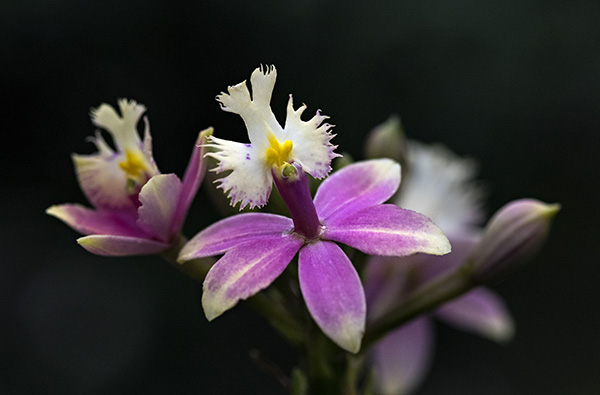
- Lighting:
- Natural light is ideal. Position your orchid near a window or in a well-lit area.
- Avoid direct sunlight, as it can cause harsh shadows and overexposure.
- Opt for diffused light to highlight orchid details.
- Composition:
- Orchids come in various shapes and sizes.
- Experiment with angles and perspectives to showcase unique features.
- Use macro photography for intricate patterns and textures.
- Background:
- Choose a simple and clean background to enhance the orchid’s beauty.
- Avoid cluttered or distracting backdrops.
- Camera Settings and Techniques:
- Adjust aperture for a shallow depth of field.
- Consider using a tripod for sharp images.
- Experiment to develop your own style.
In conclusion, photographing orchids requires a combination of technical skill and artistic vision. By understanding the importance of lighting, composition, and camera settings, you can capture the inherent beauty and intricacy of these exquisite flowers. So grab your camera, explore the fascinating world of orchids, and let your creativity blossom.
Orchid Gift Ideas for Orchid Lovers and Enthusiasts
Orchids are not just beautiful flowers; they are also a symbol of elegance, grace, and beauty. If you have an orchid enthusiast in your life, finding the perfect gift can be a delightful challenge. Whether they are a seasoned orchid grower or just starting on their gardening journey, there are plenty of gift ideas that will make their green thumbs even greener.
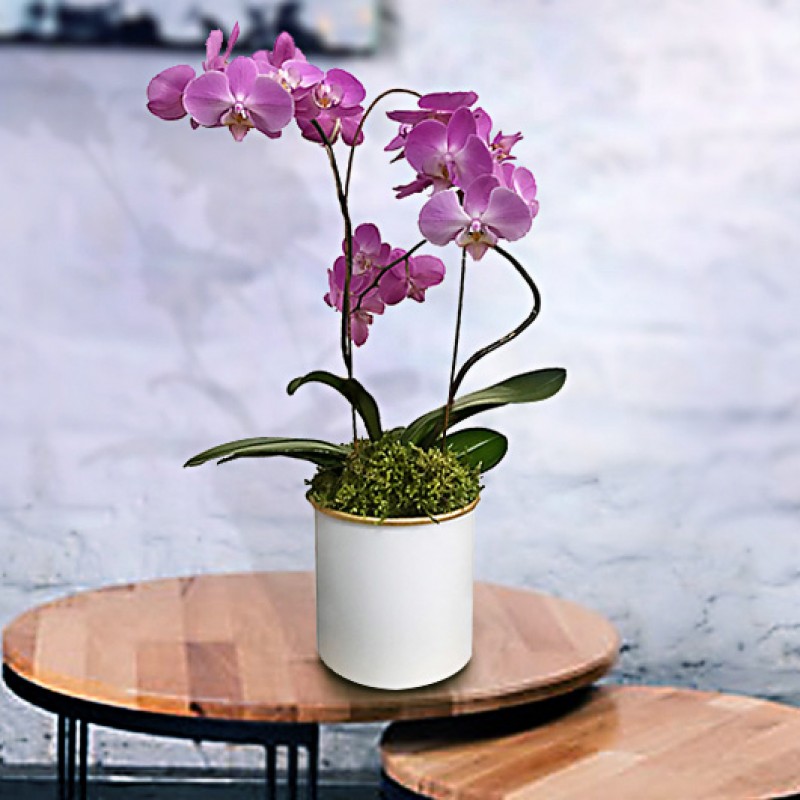
Includes essentials like pots, potting mix, and fertilizer specifically formulated for orchids.
Provides everything needed to start cultivating and caring for orchids.
Shows support and encouragement for the recipient’s passion for orchid cultivation.
Offers a wealth of information, tips, tricks, and insights into all aspects of orchid growing.
Includes articles and photographs for both beginner guides and advanced techniques.
Allows the recipient to deepen their understanding and appreciation of orchids with each issue.
A comprehensive resource on orchid cultivation.
Can be referred to time and time again for guidance and inspiration.
Enhances the recipient’s knowledge and skills in growing and caring for orchids.
No matter which gift you choose, remember that the most important thing is the thought and effort you put into finding something that aligns with the recipient’s interests and passions. By celebrating their love for orchids and supporting their growth as gardeners, you’ll undoubtedly bring a smile to their face and encourage them to continue their journey in the world of orchids.
Watch video for more information:
FAQ
Where can I find unique and rare orchid varieties to gift to a loved one who is an orchid enthusiast?
There are several online orchid nurseries and specialty stores that offer a wide range of unique and rare orchid varieties. You can explore these platforms to find the perfect gift for your orchid-loving friend or family member.
Are there any specific care instructions I should provide along with an orchid gift?
Yes, it is always a great idea to include care instructions along with an orchid gift. Orchids have specific care requirements, and providing guidance on watering, light conditions, and temperature can help the recipient ensure the plant thrives.
Can I gift an orchid plant to someone who is new to orchid cultivation?
Absolutely! Orchids make great gifts for beginners as well. It is recommended to choose a popular orchid variety that is relatively easy to care for, such as Phalaenopsis or Cattleya. Including basic care instructions can also be helpful for someone new to orchid cultivation.
Are there any accessories or tools that would complement an orchid gift?
Yes, there are several accessories and tools that can complement an orchid gift. Some popular options include decorative orchid pots, humidity trays, orchid fertilizers, moisture meters, and orchid mounting supplies. These items can enhance the overall orchid cultivation experience for the recipient.
Can I gift orchid-themed merchandise or books to someone who loves orchids?
Absolutely! Orchid-themed merchandise such as t-shirts, mugs, and jewelry can make great gifts for orchid lovers. Additionally, there are numerous books available on various aspects of orchids, including identification, cultivation, and photography, which can be an excellent gift choice for enthusiasts.
Are there any orchid-related events or workshops that I can gift to an orchid lover?
Yes, many botanical gardens, orchid societies, and horticultural centers organize orchid-related events, workshops, or even orchid shows. You can gift tickets or registrations to such events, allowing the orchid enthusiast to indulge in their passion and learn from experts in the field.

Studied Agricultural Engineering-Plant Protection at University of California, Davis.
Head of Content writing team at Southelmontehydroponics.com







